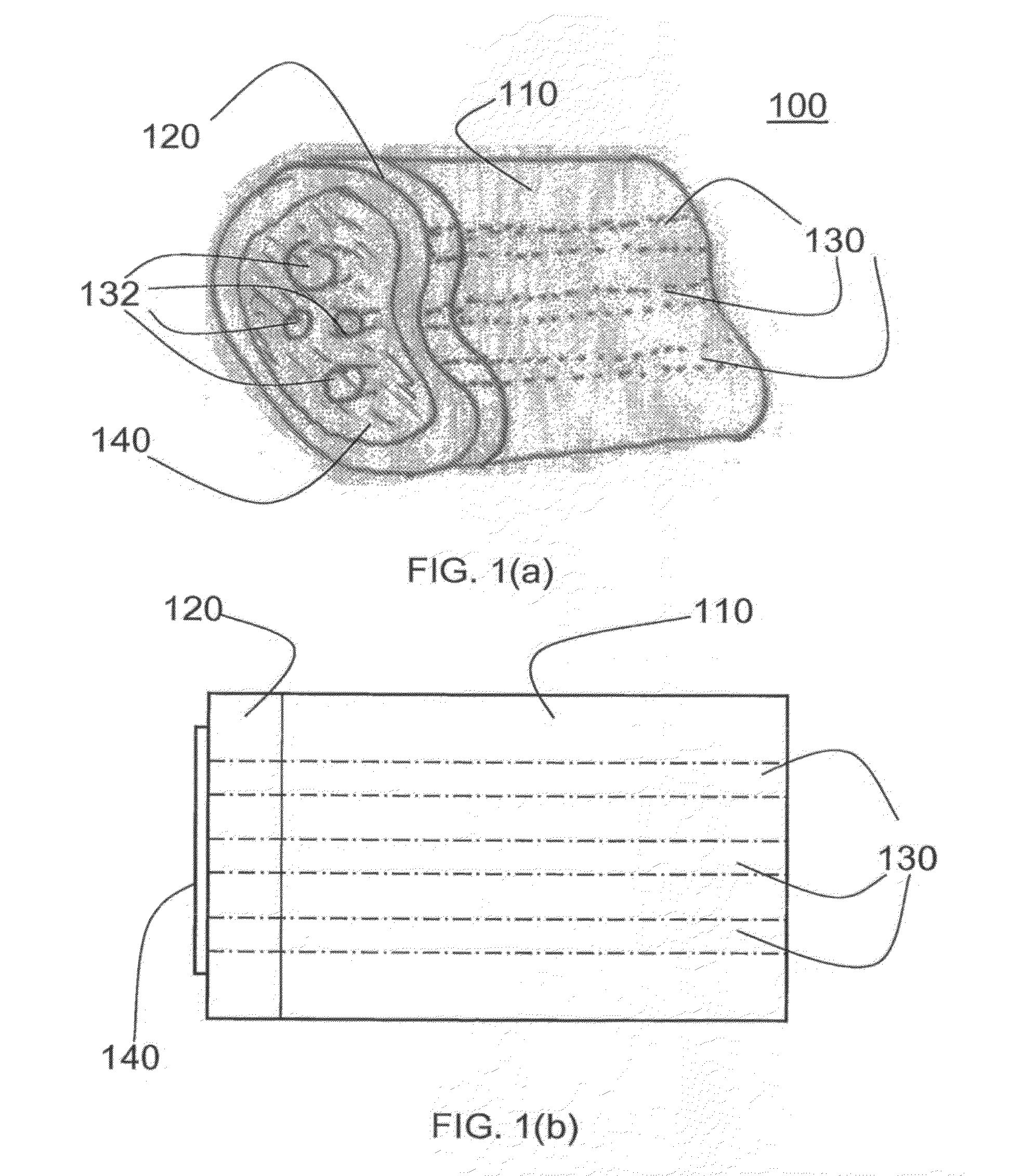Nano-otologic protective equipment for impact noise toxicity and/or blast overpressure exposure
a technology of nano-otologic protective equipment and impact noise, applied in nanotechnology, ear treatment, therapy, etc., can solve the problems of unaddressed the crucial aspect of this communication network is overlooked, and the hearing damage remains an unaddressed component of battlefield morbidity and tactical incapacitation, so as to prevent hearing damage from occurring
- Summary
- Abstract
- Description
- Claims
- Application Information
AI Technical Summary
Benefits of technology
Problems solved by technology
Method used
Image
Examples
fourth embodiment
[0071]A fourth preferred embodiment will be described with reference to FIGS. 5-8. Preliminarily, it is known that infants with ear canal wall atresia with an intact inner ear register a 90 dB hearing loss. Using this knowledge, the present invention takes advantage of physical properties of advanced polymer gel chemistries and nanoscale structures to protect the hearing organ from incoming pressure forces by forming “instant bone” in the ear canal that simulates an atretic ear.
[0072]The ear canal is the most vulnerable point of entry into the hearing organ for damaging sound waves. The human body has already supplied evidence for the protective nature of bone. The only organ fully encased in bone is the vestibular system, known to contain the body's balance and position receptors. Even though the semicircular canals are only millimeters away from the hearing organ and have delicate sensory cells similar to the loss of cochlear balance, perception is seldom an incapacitating injury ...
sixth embodiment
[0086]In this sixth embodiment, a pressure sensitive / shock-wave activated switch turns on EMF generating coils 730, which in turn hyperpolarize (paralyze) the outer hair sensory cells in the cochlea, preventing them from activating or transducing sound. It is known that the protein prestin in the hair cells are contractile (Anders Fridberger, 2004) which converts receptor potentials into fast alterations of cellular length and stiffness that routinely boost hearing sensitivity almost one thousand fold. The device will stop EMF transmission as the blast shock wave(s) are no longer encountered.
[0087]In this sixth embodiment, the device will interfere with hearing until the action potential of the hyperstimulated outer hair cells return to normal resting state. Alignment of the antenna is important. The device may use a reflected light signal or the like to point an EMF antenna 750 to the inferior aspect of the umbo of the mallius bone of the middle ear.
[0088]FIG. 15 shows an embodimen...
PUM
 Login to View More
Login to View More Abstract
Description
Claims
Application Information
 Login to View More
Login to View More - R&D
- Intellectual Property
- Life Sciences
- Materials
- Tech Scout
- Unparalleled Data Quality
- Higher Quality Content
- 60% Fewer Hallucinations
Browse by: Latest US Patents, China's latest patents, Technical Efficacy Thesaurus, Application Domain, Technology Topic, Popular Technical Reports.
© 2025 PatSnap. All rights reserved.Legal|Privacy policy|Modern Slavery Act Transparency Statement|Sitemap|About US| Contact US: help@patsnap.com



